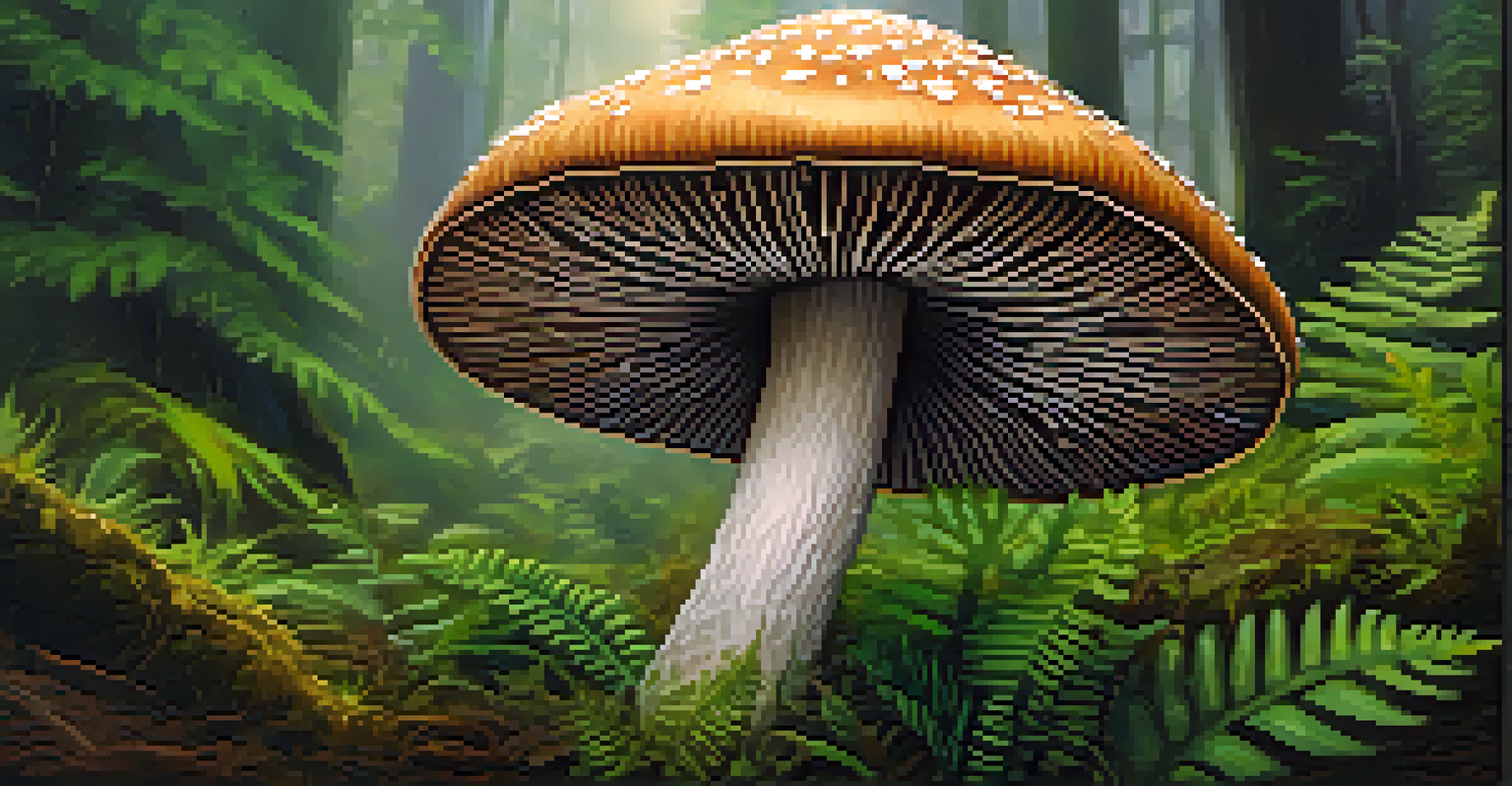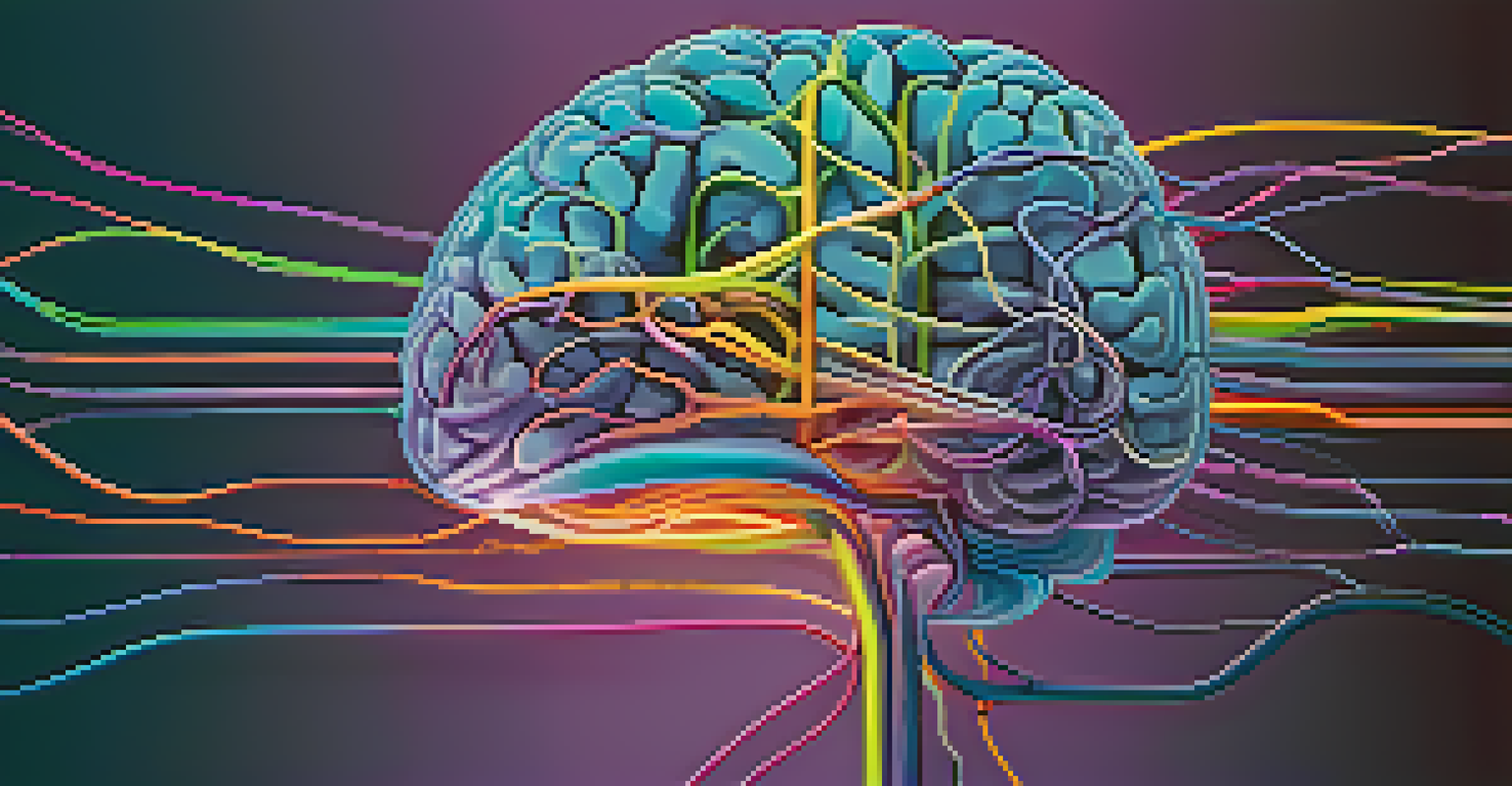Entheogens and Brain Connectivity: Insights into the DMN

Understanding Entheogens: A Brief Overview
Entheogens are substances that can induce altered states of consciousness, often used in spiritual or therapeutic contexts. Common examples include psilocybin mushrooms, ayahuasca, and peyote. These natural compounds have been utilized for centuries across various cultures, often in ritualistic settings aimed at personal transformation or healing.
Entheogens can open the door to a profound understanding of the mind and its potential.
The appeal of entheogens lies not just in their psychoactive properties, but also in their potential to foster deep insights and connections within oneself. This has led to a resurgence of interest in both scientific research and personal exploration of these substances. As we delve deeper into their effects, one key area of focus is how they alter brain connectivity.
Understanding entheogens is a gateway to appreciating their role in neuroscience, particularly in relation to the default mode network (DMN). By unlocking the mysteries of the DMN, we can better comprehend how entheogens reshape our mental landscape and facilitate new connections in the brain.
The Default Mode Network: What Is It?
The default mode network, or DMN, is a network of brain regions that typically show increased activity when we are at rest and not focused on the external environment. It plays a crucial role in self-referential thoughts, daydreaming, and mind-wandering. Think of it as your brain's internal dialogue, where you process memories, plan for the future, and engage in introspection.

Research indicates that the DMN is particularly active when we are engaged in tasks that require self-reflection. However, this can also lead to overthinking and rumination—common issues for many individuals. Understanding the DMN's functions helps shed light on the impact of various substances, including entheogens, on our cognitive processes.
Entheogens Foster Brain Connectivity
Entheogens can significantly alter brain connectivity, particularly within the default mode network, facilitating new neural pathways and experiences of unity.
In summary, the DMN is central to our internal thought processes, and its activity patterns can reveal much about our mental well-being. As we explore the influence of entheogens, examining their effects on the DMN will provide valuable insights into how they can reshape our mental states.
How Entheogens Affect Brain Connectivity
Studies have shown that entheogens can significantly alter brain connectivity patterns, particularly within the DMN. For instance, substances like psilocybin have been found to increase connectivity between areas of the brain that typically don't communicate with each other. This can lead to profound experiences of unity and interconnectedness, often described by users as a sense of oneness with the universe.
Psychedelics may help us to see our lives from a different perspective, and that shift can be incredibly healing.
This increased connectivity may explain the therapeutic benefits reported by many entheogen users. By facilitating new neural pathways, these substances can help individuals break free from entrenched thought patterns and explore alternative perspectives. In essence, entheogens can act as catalysts for cognitive flexibility and emotional healing.
As we uncover how these substances enhance brain connectivity, it becomes clear that they have the potential to foster transformative experiences. Such insights pave the way for more research into their applications in mental health treatment and personal growth.
The Role of Neuroimaging in Understanding DMN Changes
Neuroimaging techniques, like fMRI, have revolutionized our understanding of brain networks and their functions. These technologies allow researchers to visualize brain activity in real-time, making it possible to observe the effects of entheogens on the DMN. By examining brain scans, scientists can identify changes in connectivity and activity patterns that occur under the influence of these substances.
Through neuroimaging studies, researchers have found that entheogens can create a more interconnected brain state, where regions not typically linked demonstrate heightened communication. This shift can lead to a breakdown of the rigid hierarchies within the brain, fostering a more fluid and dynamic mental state. It’s akin to a traffic jam clearing, allowing for a smoother flow of information.
Therapeutic Potential of Entheogens
Research indicates that entheogens have promising therapeutic applications, showing significant reductions in symptoms of anxiety and depression for users.
These insights not only enhance our understanding of the brain's functioning but also highlight the potential for entheogens in therapeutic settings. By mapping these changes, researchers can better assess the efficacy of entheogens for treating conditions like depression and PTSD.
Therapeutic Applications of Entheogens and DMN Insights
The therapeutic potential of entheogens has gained traction in recent years, with many studies exploring their effects on mental health disorders. By examining how these substances interact with the DMN, researchers can better understand their capacity for inducing lasting change. For instance, many participants in studies report significant reductions in symptoms of anxiety and depression after guided entheogen sessions.
These positive outcomes can be attributed to the increased connectivity and emotional release facilitated by entheogens. As users navigate altered states of consciousness, they may confront and process unresolved emotional issues, leading to catharsis and healing. This process highlights the importance of a supportive environment and skilled facilitators during such experiences.
Overall, the intersection of entheogens and the DMN presents exciting possibilities for mental health treatment. As research continues, we may find that these substances offer valuable tools for fostering emotional resilience and mental well-being.
Cautions and Considerations in Entheogen Use
While the potential benefits of entheogens are compelling, it’s crucial to approach their use with caution. Not everyone responds positively to these substances, and there can be risks involved, especially for individuals with a history of mental health issues. It’s important to recognize that the setting, dosage, and personal mindset can significantly influence the experience.
Moreover, the legal status of many entheogens varies widely across regions, adding another layer of complexity to their use. Responsible exploration involves being informed about the legal implications and health risks associated with these substances. Consulting with healthcare professionals or trained facilitators can provide necessary guidance.
Cautious Approach to Entheogen Use
While entheogens offer potential benefits, their use requires caution due to varying individual responses and legal considerations.
Ultimately, while entheogens hold promise for enhancing brain connectivity and therapeutic outcomes, they should be approached thoughtfully and responsibly. Awareness and education are key to maximizing the benefits while minimizing potential risks.
Future Directions in Entheogen Research and Brain Studies
As interest in entheogens continues to grow, so does the need for further research into their effects on brain connectivity and overall mental health. Future studies may delve deeper into the mechanisms by which these substances influence the DMN and other brain networks. This could lead to more tailored therapeutic approaches that maximize the benefits of entheogen use.
Additionally, exploring the long-term impacts of entheogen use on brain connectivity could provide vital insights. How do these experiences shape our cognitive processes and emotional well-being over time? Answering these questions will be essential for developing safe and effective treatment protocols.

In conclusion, the journey into the world of entheogens and brain connectivity is just beginning. As we uncover the intricate relationships between these substances and the DMN, we open new doors for understanding the profound complexities of the human mind.